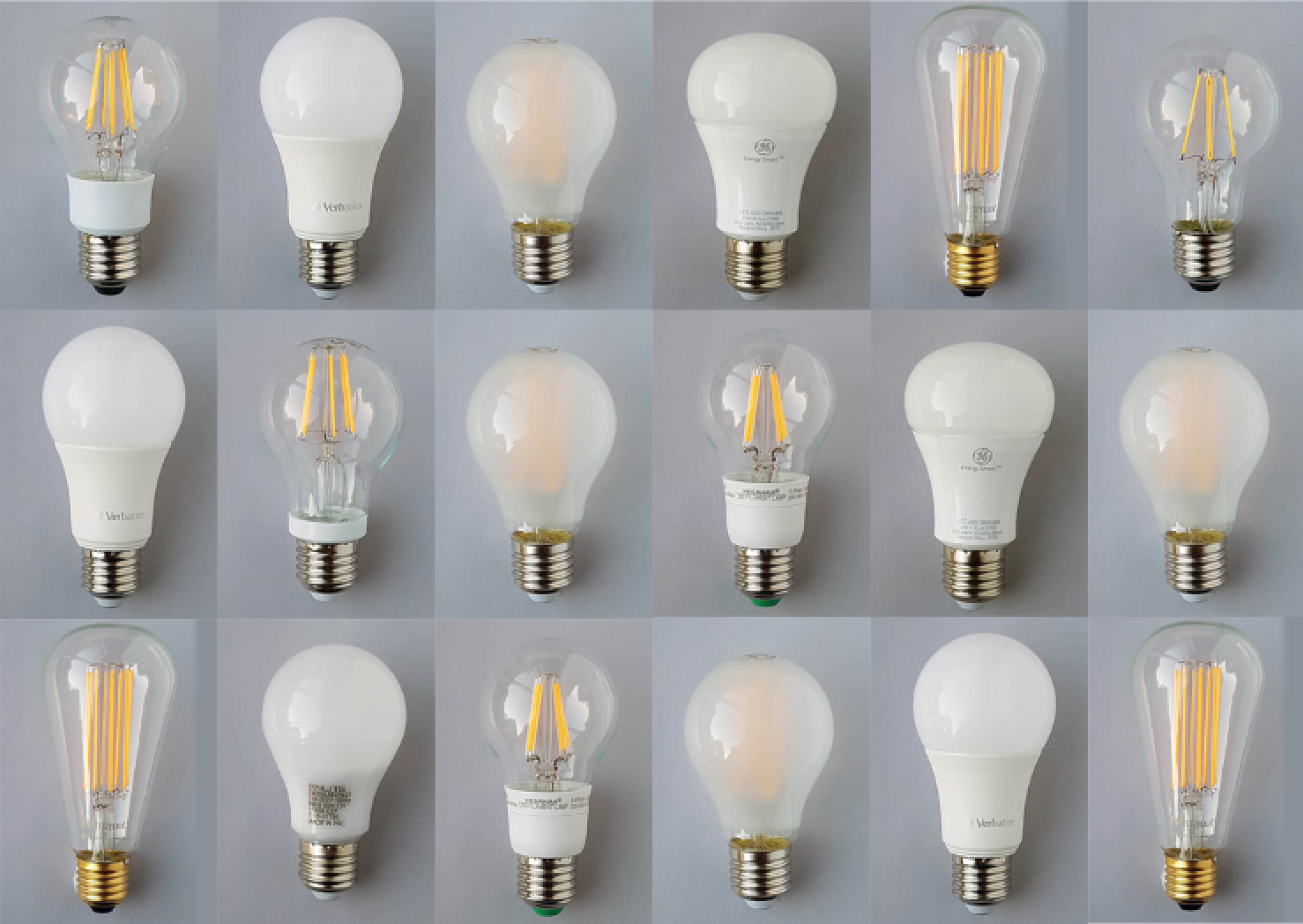These lamps have a round ‘bulb’ and are designed to retrofit anywhere you would use a normal tungsten filament lamp. They are LED versions of what are often called GLS or A-line lamps. Some of the bulbs are frosted or opal and some have visible LED ‘filaments’. All the lamps claim to be dimmable.
It is worth remembering that a 60W tungsten filament lamp produced about 700 lumens. This much light from a bare filament was usually considered to be too glaring and so people fitted lamp shades over them. Alternatively, the bulb was made with an opal or frosted finish to soften the effect.
Of course, the difference is found in the better efficacy. The average of the LEDs we tested was 95 lumens/W, compared with 10 lm – 12 lm/W for a standard tungsten lamp. That’s an 85 percent saving in energy.
We tried the lamps on two different dimmers. One was a traditional resistive load type of dimmer used for tungsten filament lamps. The other was a more sophisticated unit designed for retrofit LED lamps. The purpose of the test was simply to highlight whether there were likely to be any problems or, conversely, lamps which performed particularly well. We could not test every combination because there is such a wide range of dimmers on the market.
All the LED lamps worked well on both dimmers but this may be because we also had a 70W incandescent lamp in the circuit in order to make a fair visual comparison when dimmed.

